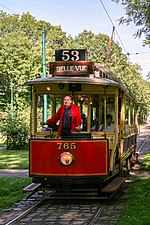Parklife (festival)
Counterculture festivalsElectronic music festivals in the United KingdomMusic festivals in Greater ManchesterMusic festivals in HampshireRave culture in the United Kingdom ... and 1 more
Use British English from March 2021
Parklife is an annual two-day music festival in Manchester, England and takes place in June each year. The festival predominantly features dance and electronic music, as well as pop and hip-hop artists. Jointly organised by a number of groups, including Manchester's The Warehouse Project and Live Nation, the festival started life as Mad Ferret Festival in Platt Fields Park, Rusholme, before moving to Heaton Park in north Manchester in 2013 in order to accommodate the increased numbers attending. By 2023 the non-camping festival has a capacity of 82,500 people over the two days.
Excerpt from the Wikipedia article Parklife (festival) (License: CC BY-SA 3.0, Authors).Parklife (festival)
Sheepfoot Lane, Manchester Sedgley Park
Geographical coordinates (GPS) Address Nearby Places Show on map
Geographical coordinates (GPS)
| Latitude | Longitude |
|---|---|
| N 53.5347 ° | E -2.2561 ° |
Address
Sheepfoot Lane
M25 0DN Manchester, Sedgley Park
England, United Kingdom
Open on Google Maps









